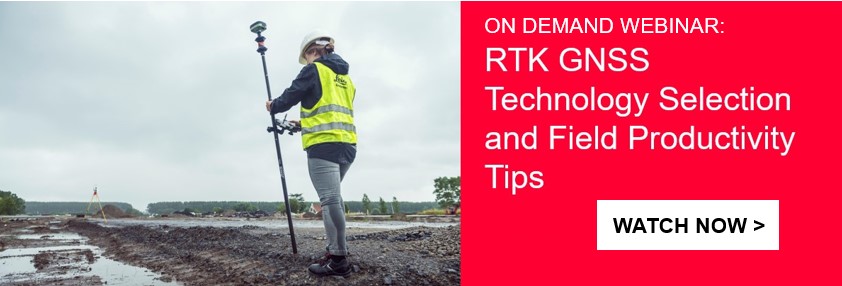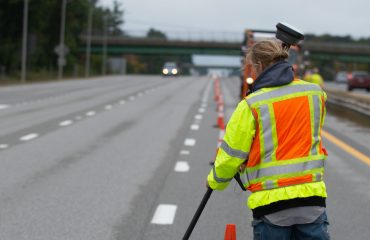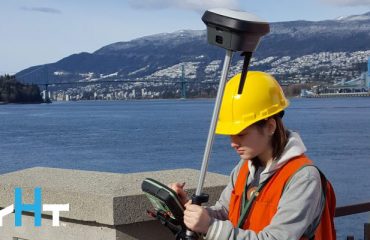Tilt compensating RTK GNSS antennas promise significant productivity gains, but do they deliver on accuracy? If the brand is Leica Geosystems, the answer is yes. Here’s why.

“Our IMU algorithms update quickly to what’s happening out in the field. So if you’re moving the IMU or you’re moving the GS head, it’s updating very, very quickly to provide the most accurate possible position at the pole tip.”
—Burke Asay, Product & Support Manager, Surveying & Engineering, Leica Geosystems Inc.
When the first calibration-free, true tilt compensation GNSS smart antenna hit the market in 2017, surveyors were curious. Promises of dramatic increases in productivity and safety were quickly confirmed by real-world experience, with early adopters reporting time savings of 50% or more. Other tilt rovers rapidly followed so that no-calibration tilt compensation is now considered standard.
But for all the interest in the technology, one nagging question still prevents many professionals from investing in a tilt rover: How do you know if you can trust the accuracy of the results?

Burke Asay, survey product and support manager for Leica Geosystems in the US and Canada, says Leica takes the question seriously.
Thorough Testing and Calibration
“Leica Geosystems was the first to come out with IMU tilt compensation with the GS18 T,” he says, noting that the same technology is used in Leica’s other tilt sensors, the GS18 I and the new GS05.
“When we talk about IMUs, there are some challenges: temperature change, time, stress. There are biases and there is rotation inside the housing,” he explained in a recent webinar. “These considerations are all taken into account in Switzerland when the instruments are being assembled.”
Burke explained that Leica Geosystems uses rate tables that ensure calibration over the entire temperature range. The gravitational impact on the IMU gyroscope is also carefully estimated.
“One thing about Leica that we are proud of is you don’t have to do a field calibration with our technology,” Burke says. “That all happens in the factory.”

Enhanced Algorithms
After the IMU is built into the housing and the calibration is performed, Leica’s enhanced algorithms come into play. These algorithms estimate IMU biases 20 times every second, allowing users to perform tilt compensated measurements with high accuracy and reliability.
While the mid-range GS05 GNSS smart antenna provides tilt compensation to 30 degrees, the high-end GS18 I and GS18 T smart antennas provide unlimited tilt capabilities. This means the instruments have been thoroughly calibrated and tested to provide reliable performance in every possible scenario.
“Calibration is performed with all of the GS18s to make sure that the GS18 tilt sensor IMU is going to work over every single field situation that you’re running into, from minus 40 to plus 40, to bangs and bruises and all of those other things,” Burke says. (The upper operating temperature limit of the GS sensors is actually 65°C/149°F.) “Our IMU algorithms update quickly to what’s happening out in the field. So if you’re moving the IMU or you’re moving the GS head, it’s updating very, very quickly to provide the most accurate possible position at the pole tip.”

Proven Accuracy and Reliability
Leica’s unique combination of rate tables, calibration and testing, and enhanced algorithms provide a measurable impact on accuracy and reliability.
“Our GS instruments provide the most accurate and most reliable tilt compensation in the market that doesn’t require field calibration,” Burke says.
The proof is in the utilization. “The big thing we have seen in relationship to the tilt capability of the GS18 T and GS18 I is that it is heavily used, in the high 90% range,” Burke says. “If someone buys tilt, they start to use it every day and all day, and that’s because it’s reliable.”
“We’re very proud of that and of the reliability and accuracy of our tilt technology.”
To talk to one of our experts and learn more about how to optimize your surveying potential with technology, please contact us.






